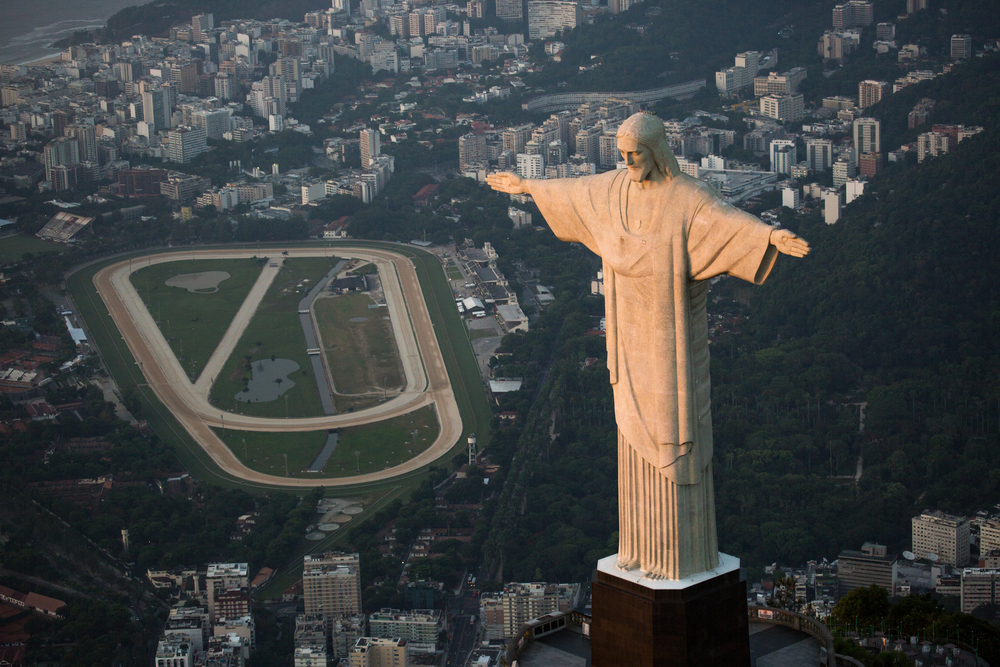In 1859, while Brazil was still under Portuguese rule, French priest Pierre-Marie Bos consulted the Imperial Princess Isabel, suggesting the royal family build a large statue of Jesus Christ at the highest point of Rio de Janeiro, the colony’s capital city at the time. The monument was to be placed overlooking the city at the peak of Corcovado hill, in the middle of the Tijuca National Park.
But the idea was ignored, never getting off the ground. Indeed it was only in 1921, long after the royal family had fled and Brazil became a republic, that the project was pulled out of a dusty drawer and put into action.
The idea was for the statue to serve as part of the independence centenary celebrations, to be held the following year. An assembly was called, and those present decided to stick to the original plan of building the monument on Corcovado.
Work began the following year amid popular appeal and a large fundraising drive by the Catholic Church. In all, the equivalent of BRL 9.5 million (USD 1.75 million) was raised.
It would take more than 10 years for the world-famous Christ the Redeemer statue to become the man-made wonder it is today — a symbol of Rio de Janeiro and the most visited tourist attraction in the country. On the evening of October 12, 1931, the provisional government of Getúlio Vargas inaugurated the 30-meter tall figure, declaring it open for public visitation.
Now, 90 years on, Rio de Janeiro city hall has prepared a week of celebrations to commemorate the anniversary of Christ the Redeemer, which since 2007 has been listed among the New Seven Wonders of the World.
According to a study by think tank Fundação Getúlio Vargas, the statue generates a total of BRL 1.462 billion a year (USD 260 million), creating over 21,000 direct and indirect jobs.
Plaster, steel, and whale oil?
Beyond simply taking much longer than expected, the process of building Christ the Redeemer was full of quirks and odd trivia. For instance, in the original project drawn up by engineer Heitor da Silva Costa, the Christ statue was meant to be carrying a globe. The iconic open-arms pose was actually thought up by Carlos Oswald, who led Costa’s construction team.
Christ the Redeemer remains the world’s largest art deco statue, standing 30 meters tall and resting on an 8-meter pedestal. Measuring 28 meters from one hand to the other, the statue is originally a plaster cast, which was then covered in rebar and mortar made from a mix of sand, sugar, and whale oil. To finish, volunteers covered the structure in countless small squares of fabric, placing pieces of highly resistant soapstone on top.

Indeed, before even settling on the final model, commissioned French-Polish sculptor Paul Landowski made a number of different molds, all in France. For Christ’s 3.2-meter long hands, Landowski used the hands of poet Margarida Lopes de Almeida as a model. The statue’s head was sculpted by Romanian artist Gheorge Leonida, hired by Landowski.
Once the final plaster model had been built, it was shipped in hundreds of parts from Paris to Rio de Janeiro — the head alone consisted of 50 separate pieces.
Putting it all together
Once they arrived in Rio de Janeiro, the many pieces of the soon-to-be Christ the Redeemer were gathered at the Nossa Senhora da Glória church near the city center. From there, they were transported up Corcovado hill on what was the country’s first electric railway, which is still in operation today.
At Christ’s feet, there is a small chapel dedicated to Our Lady Aparecida, with room to sit no more than 20 people.
Visitors can go inside the statue, climbing up via a tight and winding staircase that gets increasingly narrower upon ascending. To reach the arms, for instance, visitors need to crouch down in order to continue climbing the steps.

On the ninth flight of steps, tourists can see Christ the Redeemer’s heart, which is 1.3 meters tall and made of soapstone. Inside, there is a bottle containing the family tree of engineer Heitor Levy — one of the project’s lead architects along with his namesake Heitor da Silva Costa — as a sign of his faith.
Born Jewish, Levy suffered a car accident during the statue’s construction. After surviving, he converted to Catholicism.
There are no official records to show exactly how many people worked on building Christ the Redeemer. However, despite the dizzying heights and strong winds atop Corcovado hill, no one died during construction — practically a miracle considering that laborers often worked while precariously hanging off scaffolding. The statue can withstand winds of up to 250 kilometers per hour, the equivalent of a category five hurricane.
If you are planning on visiting Christ the Redeemer during its anniversary celebrations, patience and physical disposition are a must. The full experience can take several hours, especially on weekends and holidays. But for those not keen on hiking Corcovado hill, there is the option to take a train or a hired minibus.











 Search
Search






































